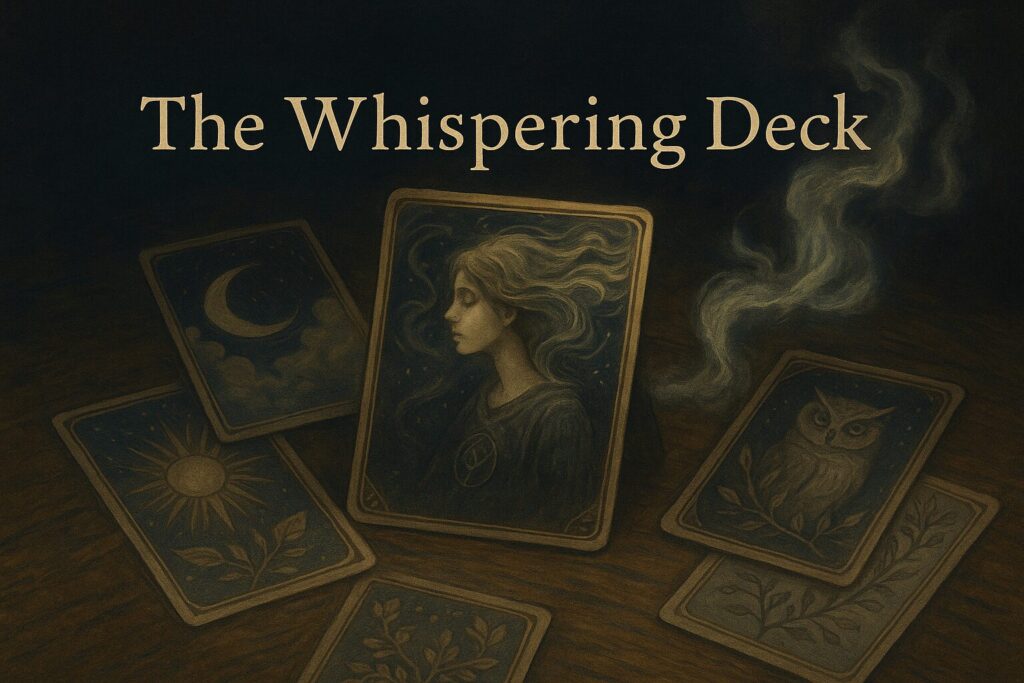Oracle Cards

To open an oracle deck is to enter into conversation with mystery in its most fluid form. Unlike the Tarot — which speaks in a structured, ancient language of archetypes — oracle cards form their own dialects, each deck a unique act of revelation. Where the Tarot is architecture, the oracle is weather: shifting, personal, and responsive to the emotional climate of the moment. Its power lies in freedom; its language is direct intuition.
Historically, the oracle deck emerged not from a single lineage but from a desire to simplify and personalize divination. In the eighteenth and nineteenth centuries, alongside the development of Tarot as a formal esoteric system, came lighter, folk-rooted decks like the Lenormand — named for the famous French seer Mlle. Marie Anne Lenormand, who read for Empress Josephine and Napoleon. These “fortune cards” blended playing-card suits, simple imagery, and symbolic keywords. Over time, they evolved into the diverse oracles of today: angel cards, ancestor decks, moon or elemental decks, goddess cards, animal spirits, shadow and affirmation sets — each a self-contained symbolic cosmos crafted by its creator.
The essence of oracle work is immediacy. Each card speaks plainly, carrying its meaning without the hierarchies of numbered suits or major trumps. Because of this, oracle reading is both accessible to beginners and endlessly expressive for seasoned practitioners. The reader communes directly with the imagery, drawing insight not from memorized correspondences but from resonance — from the intuitive spark that leaps when a symbol mirrors one’s inner truth. The art lies not in system but in listening.
Philosophically, oracle cards dwell in the realm of synchronicity. To shuffle a deck and draw a card is to invite the unseen to answer in symbols chosen by chance yet guided by intent. Their messages arrive like whispers from the unconscious or the divine, bridging emotion and revelation. In this sense, oracle reading resembles dream interpretation more than analytical divination: a living dialogue between self and spirit, ever evolving, never fixed.
Within Witchcraft and Wicca, oracle cards serve as mirrors for mood and energy, often used in daily practice to take the pulse of a spell, a season, or a moon phase. They accompany meditation and journaling, assist in shadow work, or open ritual space by focusing awareness. Some witches draw an oracle card before each Sabbath or Esbat, letting its message shape the circle’s intention. Others integrate oracle decks alongside Tarot — the Tarot to structure the reading, the oracle to soften and translate its emotional tone.
Unlike the Tarot’s archetypal rigor, oracle decks embrace personal gnosis. A witch may craft her own deck to reflect her path — painting, photographing, or inscribing her own spirits, herbs, and symbols. In doing so, she transforms divination into devotion, each card an altar in miniature. The making of an oracle deck becomes an act of magic: the externalization of an inner cosmology.
An example reading might be simple yet profound. A seeker draws three cards from a Moon Oracle: Dark Moon – Release, Waxing Moon – Growth, Full Moon – Illumination. Together, they form a narrative of shedding, tending, and revelation — a reminder that all cycles move from shadow to light and back again. The meaning rests not in complex interpretation but in reflection and rhythm. The oracle does not instruct; it reminds.
Oracle reading therefore thrives in emotional spaces where Tarot might feel rigid — during times of grief, transition, or creative gestation. It favors intuitive trust over analysis. Each deck is a teacher of its own temperament: some speak like ancestors, others like muses, others like mirrors held up to the heart. To work with them is to learn a language that changes as you change.
In the broader landscape of divination, oracle cards represent the democratization of the divine — a way for anyone to converse with spirit without initiation or hierarchy. They are gifts of immediacy, of play, of heart. Their symbols are alive precisely because they are personal: reminders that wisdom does not reside only in ancient texts but also in the pulse of modern imagination.
In the end, oracle cards are less about answers than affirmation. They invite the seeker to pause and perceive meaning in the moment — to recognize that intuition itself is sacred, that the divine is always speaking, and that sometimes the simplest message, drawn by chance, is exactly the one the soul already knew.

